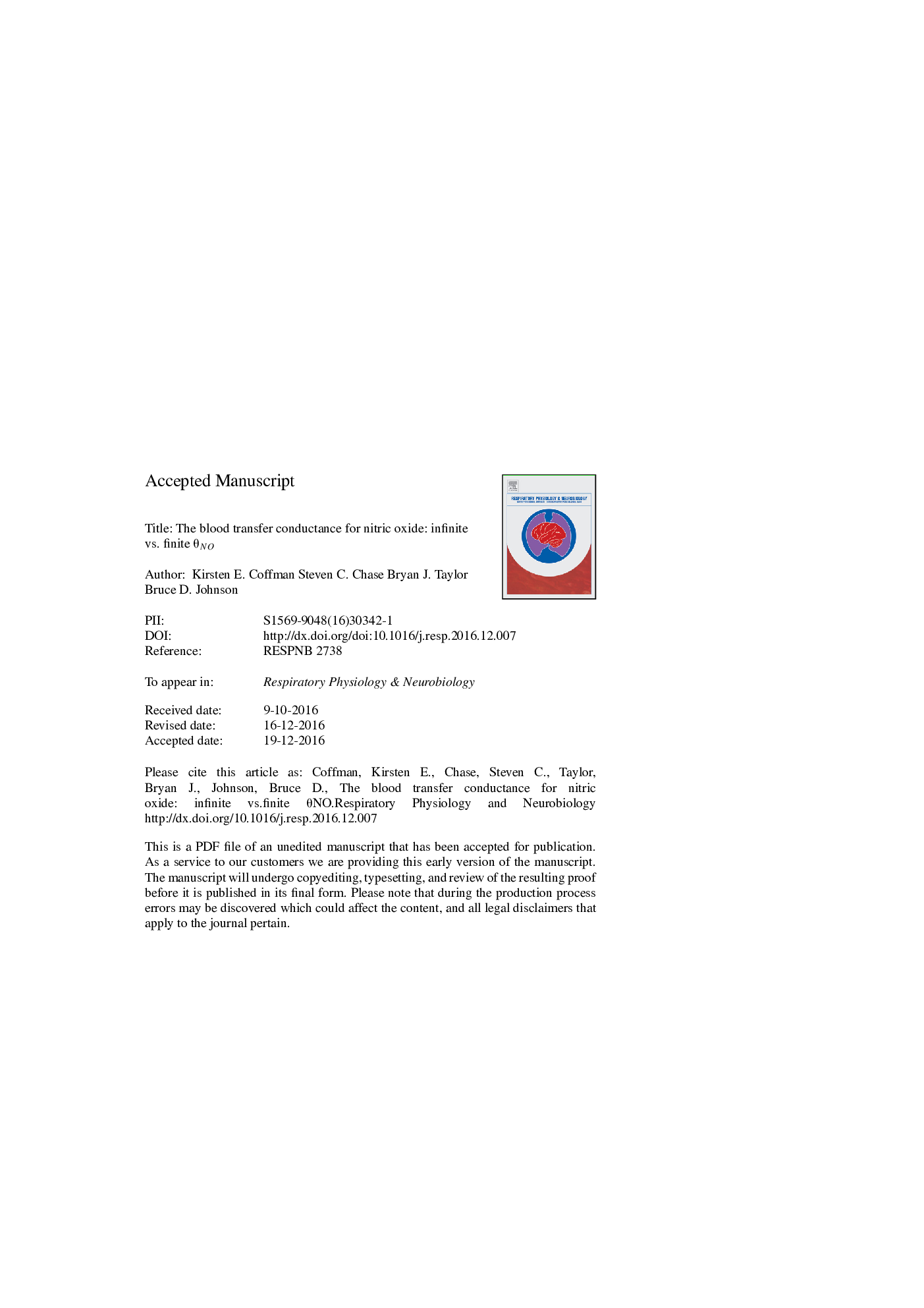| Article ID | Journal | Published Year | Pages | File Type |
|---|---|---|---|---|
| 5594171 | Respiratory Physiology & Neurobiology | 2017 | 36 Pages |
Abstract
Whether the specific blood transfer conductance for nitric oxide (NO) with hemoglobin (θNO) is finite or infinite is controversial but important in the calculation of alveolar capillary membrane conductance (DmCO) and pulmonary capillary blood volume (VC) from values of lung diffusing capacity for carbon monoxide (DLCO) and nitric oxide (DLNO). In this review, we discuss the background associated with θNO, explore the resulting values of DmCO and VC when applying either assumption, and investigate the mathematical underpinnings of DmCO and VC calculations. In general, both assumptions yield reasonable rest and exercise DmCO and VC values. However, the finite θNO assumption demonstrates increasing VC, but not DmCO, with submaximal exercise. At relatively high, but physiologic, DLNO/DLCO ratios both assumptions can result in asymptotic behavior for VC values, and under the finite θNO assumption, DmCO values. In conclusion, we feel that the assumptions associated with a finite θNO require further in vivo validation against an established method before widespread research and clinical use.
Related Topics
Life Sciences
Biochemistry, Genetics and Molecular Biology
Physiology
Authors
Kirsten E. Coffman, Steven C. Chase, Bryan J. Taylor, Bruce D. Johnson,
